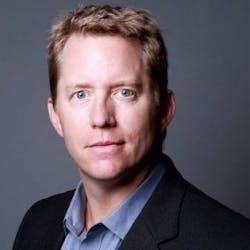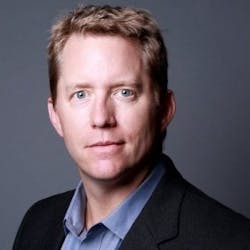No one can accuse Dynapower of being trendy when it comes to microgrids.
Adam Knudsen, Dynapower president
Well before Sandy – the 2012 superstorm that spurred today’s microgrid market – the Vermont inverter manufacturer was puzzling together technology for microgrids.
“Way back in late 90s early 2000s, we were putting power electronics together on microgrids, well north of 10 years ago,” said Adam Knudsen, Dynapower’s president, in a recent interview.
Back then, partners sought out Dynapower’s expertise to integrate energy storage, generation and loads into a harmonious whole. An outcome was Dynapower’s work on the largest telescope in the South Pole. Installed by a University of Chicago-led group in the mid-2000s, the telescope offers an exceptional view of space because of its position in Antarctica.
“We built a piece of power electronics that absorbs and injects energy as the very large array starts and stops its turns, Knudsen said. “It doesn’t get more remote or more challenging than the bottom of the world.”
Dynapower tackles new frontier of microgrid complexity
Today, Dynapower is conquering another kind of difficult terrain, this one a market perception that has hindered microgrid growth — the idea that installing a microgrid is rough going.
It’s no secret that utilities, communities, and businesses sometimes veer toward simpler distributed energy systems because of the complexities associated with assembling and interconnecting microgrids.
With their multiple sources of generation, energy storage, and often more than one customer, advanced microgrids suffer a curse and a blessing. Their resource multiplicity makes for greater reliability during a power outage and maybe even lower costs during normal operations. But it also creates more complexity.
The bottom line is that “you can’t just put a whole bunch of pieces together, connect them up, and press the start button and assume everything will work well,” he said. “Somebody needs to take responsibility for the overall interface and coordination.”
Fighting to be boss of the grid
Products within the microgrid may fight each other for voltage control. Renewable generation, storage, and solar inverters all want “to be the boss of the grid,” he said.
As a result. developers find themselves engaged in a time-consuming trial and error task to make all of the components work together, a process exasperated by an unwillingness of vendors to lift the lid on their technology out of fear they will reveal trade secrets to competitors. The result is inefficiency.
“If the system doesn’t operate when you turn it on the way you hope it will operate, you have delay in the project and grumpy customers,” Knudsen said.
To help overcome this problem, Dynapower has invested heavily over the last 18 months in inverter and site controller firmware that takes away the need to hardwire microgrid components together.
“You can connect our microgrid bi-directional energy and storage system and that system will seamlessly interact with the overall microgrid,” he said.
The new Dynapower system does not have to be the voltage source. It can dynamically synch and source and change its control modes to add stability to the microgrid. And it can do so without direct communication to the solar inverter or generator.
It’s a “critical piece” of microgrid engineering, he said, because it allows an energy storage system – which can act as generation or load – to be connected to the grid and microgrid in a “much more predictable and reliable manner.”
This means less complexity, less risk and more predictability in microgrid development and operation.
“I see this as a cost reduction for microgrids. If all of the components can work more seamlessly together, then the fear of deploying microgrids – which have the reputation of having complex interconnection requirements – that goes down,” he said.
Precipice of new energy signature
Now, with the complexity removed, and energy storage on the rise, microgrids are becoming even more attractive to customers and investors, he said.
“It took a long time to ramp up. But we’re here,” Knudsen said. “We’re long past demonstration projects in the energy storage market, and I believe we’re long past the demonstration project in the microgrid energy market.”
He added: “When technology, planners and financing come together, that’s when you change markets. And when you change markets, you change the entire energy signature. We are on the precipice of doing just that.”
Track news about Dynapower and other microgrid leaders on the Microgrid Knowledge Players Channel.
About the Author
Elisa Wood
Editor-in-Chief
Elisa Wood is the editor and founder of EnergyChangemakers.com. She is co-founder and former editor of Microgrid Knowledge.

